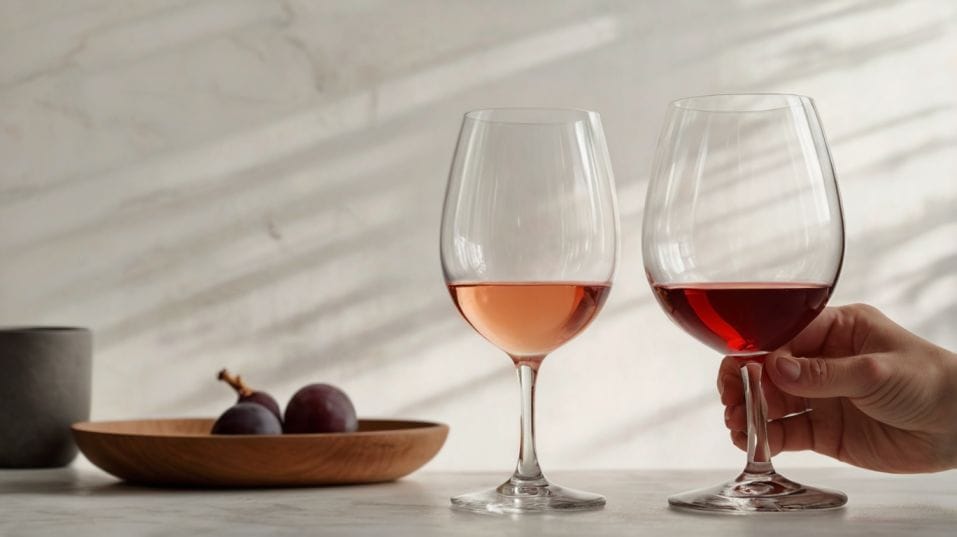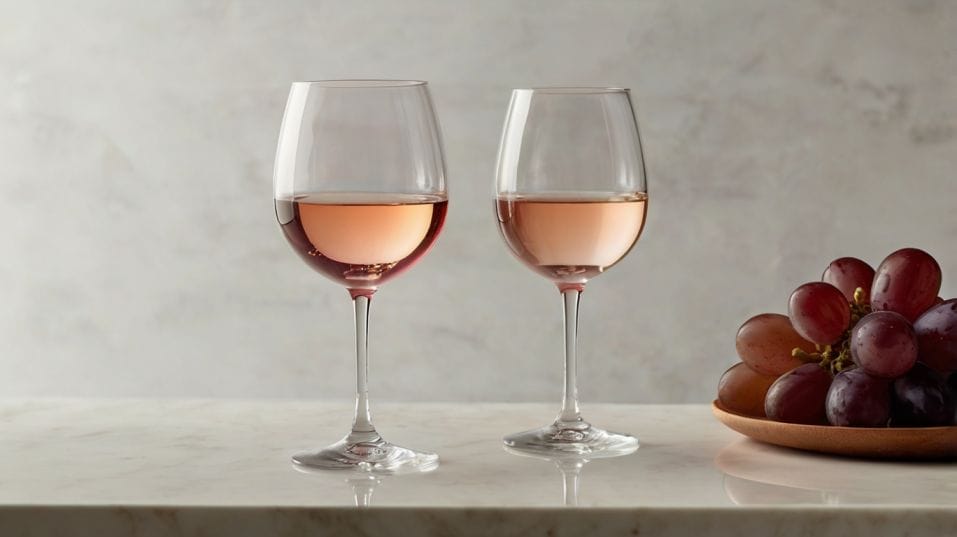Tasting Flights: How to Try 3 Wines the Smart Way
Tasting flights are the smartest way to sharpen your wine skills. Learn how to compare, taste, and grow your palate—glass by glass.

Ever wonder how wine lovers seem to just get it? The secret isn’t fancy jargon—it’s comparison. A wine tasting flight gives you three wines side by side, helping you tune into what you actually enjoy.
It’s low-pressure, wildly insightful, and a shortcut to a sharper palate. Whether you’re at a tasting room or pouring at home, here’s how to make those three glasses count—without overthinking a single sip.
Think in Progression, Not Just Preference
A flight isn't a random trio. Or at least, it shouldn’t be. What makes a flight effective is how the wines interact with each other—and how they’re ordered.
You want to set yourself up to notice contrast and evolution. Start light and build. That means beginning with wines that are lower in body, alcohol, and oak influence, then working toward those with more structure, intensity, or richness.
Think of it like music: you wouldn’t start a concert with the encore. This principle isn’t just tradition—it protects your palate. Heavy reds can dull your perception of delicacy; high-tannin wines can make softer ones feel flat.
If you’re pouring your own flight, lean on clues like color, region, and grape style to guide the order. A stainless steel-fermented white should always come before a bold, earthy red.
That said, don’t overthink it. If you're unsure, ask someone who knows the wines to suggest a sequence. Smart progression isn’t a rule—it’s a tool.

Use All Your Senses, But Tune Out the Noise
You don’t need to be a sommelier to taste wine well—you just need to slow down and pay attention. The power of a flight is that it lets you compare wines in real time, which is far more revealing than tasting them in isolation.
Sight Sets the Scene
Start with appearance, but don’t get stuck there. Clarity, color, and viscosity can give you hints, but they don’t define quality or flavor.
A pale white wine might be electric and layered; a deep red might be soft and short. Let sight set the scene, but save your judgments for the nose and palate.
Smell Reveals More Than You Think
Smell matters more than you think. Bring the glass to your nose and take a slow, full inhale. What do you notice? Fruit? Flowers? Spice?
The answer doesn’t need to be exact—just honest. You’re building a memory of how different wines smell and how those aromas connect to taste.
Taste With Intention
Now take a sip. Let it move across your tongue before you swallow. You’re not looking for tasting notes—you’re asking questions: Is it sharp or smooth? Dry or slightly sweet? Does it hang around or disappear quickly?
Then, move to the next wine and repeat. By the third wine, you’ll start to notice shifts: maybe one feels rounder, or more structured, or cleaner on the finish.
That’s what tasting flights reveal—subtle but meaningful differences that guide your personal preferences over time.
Let Comparison Drive Clarity
The biggest advantage of a flight isn’t the quantity—it’s the contrast. You’re not just learning what you like. You’re learning why you like it.
That’s why it pays to taste wines that have a clear reason to be next to each other. They might be made from the same grape but grown in different regions.
Or they might be three entirely different styles from the same winemaker. Either way, the more focused the comparison, the more insight you’ll get.
Say you’re tasting three Chardonnays—one unoaked, one lightly oaked, one full-bodied and barrel-aged. That’s a masterclass in texture and winemaking influence.
Or maybe it’s three reds from different regions: a Pinot Noir from Oregon, a Syrah from the Northern Rhône, and a Tempranillo from Spain. Suddenly, you’re not just learning grapes—you’re learning climate, tradition, and structure, all at once.
As you taste, let the wines speak to each other. Does one feel simpler or more balanced? Do you prefer the energy of the first or the depth of the last? Even if you don’t love one, ask why. Dislike is just as educational as delight.
Refine Your Palate Without Overthinking It
You don’t need the perfect words. You just need to keep tasting with intention.
When you reflect on a wine, skip the formal jargon. Focus on how it feels. Does it make your mouth water? Does it coat your tongue? Is it bright, plush, lean, bitter? These sensations matter more than memorized flavor wheels.
As you grow more familiar with wine, you’ll start recognizing structure more clearly—things like acidity, body, tannin, and finish.
These are the bones of wine, and learning to feel them is more useful than identifying a specific fruit or spice note.
You can also take short notes if that helps, but keep them simple. Try writing a single sentence per wine: “Fresh and crisp, citrusy, short finish.”
Or “Richer than the last, more spice, soft tannins.” You’re not trying to publish your thoughts—you’re organizing your impressions. That’s how your palate evolves.
Use Your Curiosity—And Ask Better Questions
Don’t be afraid to talk to the person pouring. Whether it's a winemaker, sommelier, or server, they’re there to help you connect the dots.
And the better your questions, the more useful the answers. Instead of asking “Is this wine good?” ask, “What makes this one different from the last?” Or “How does aging change this grape?” Let the conversation steer toward insight, not opinion.
If you’re flying solo or tasting at home, ask yourself the same kinds of questions. Why does this wine feel smoother?
Is that from the grape, the region, or the winemaking? How does it compare to something I’ve had before? This kind of active tasting builds confidence.
Over time, you’ll find yourself recognizing patterns: you gravitate toward certain regions, or you notice which wines taste better with food, or which ones surprise you most when chilled. These patterns are your palate taking shape.
Final Thoughts
A flight is more than a sampler—it’s a training ground. Every pour gives you a chance to taste smarter, compare more clearly, and explore without guessing. It’s where wine starts making sense—not through facts, but through flavor.
The next time you’re handed a list, skip the default glass. Ask for a flight. If you’re buying bottles, pick three with a theme and open them side by side. You don’t need perfect conditions—just a clean glass, some curiosity, and a little focus.
Wine gets easier, and more rewarding, the more intentionally you taste. So try something new today. Line up three wines. Let them talk to each other. And listen with your glass.




